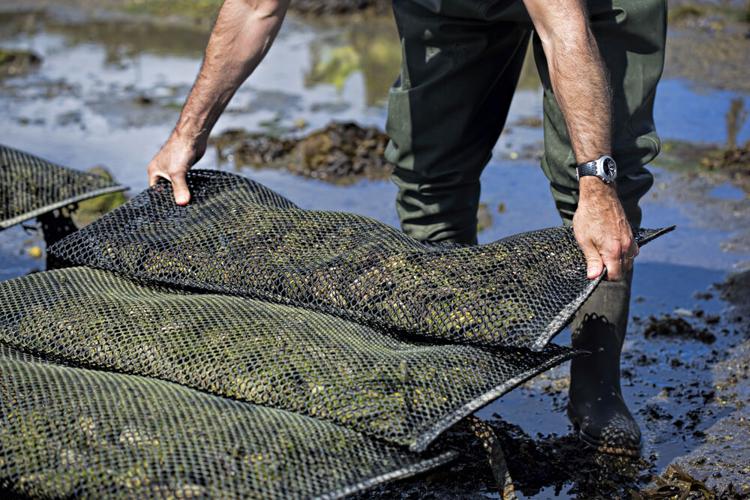Texas to start issuing oyster farming permits: ‘For those who are well-informed it can be a profitable endeavor’

Stacks of metal bags with oysters on an oyster farm.
(The Center Square) – The application process is getting started for farmers looking to join the newly launched oyster mariculture industry in Texas, the last state on the Gulf of Mexico to allow it.
The new industry’s projected economic contribution to the Texas economy is expected to be significant.
“The primary goal of this new industry is to provide jobs to restore working waterfronts in Texas damaged three years ago by Hurricane Harvey,” Dr. Joe Fox, Chair of the Marine Resource Development, Harte Research Institute (HRI) for Gulf of Mexico Studies, Texas A&M University Corpus-Christi, told The Center Square by email.
“It is also being developed to provide oysters to Texas retailers and that entire value chain to offset a declining and unpredictable natural fishery,” Fox said. “Overall economic input to the Texas economy could be in the tens of millions of dollars or more if you consider everyone who will benefit from it.”
The farms, which are habitat for sport fish, also would support the Texas recreational fishing industry, Fox added.
The state legislature voted to approve oyster farming in 2019.
HRI is building the first research oyster hatchery on the Texas coast, the Texas Oyster Center, which will grow oyster larvae to both support reef restoration and train a local workforce in oyster mariculture and sustainable seafood careers, Fox said.
Oyster farming is rigorous work and must be managed like any agriculture business on dry land, said Fox, who worked with state officials to develop regulations for the new industry, overseen by the Texas Parks and Wildlife Department (TPWD).
“The rules/regs farmers will follow are relatively similar to those for other coastal states, but with modifications specific to Texas waters and regarding siting of farming leases, documentation of culture practices, and transport of product,” Fox said.
Emphasis will be on safety of product, he added.
“Farmers will likely be able to access application forms between now and August 31,” Fox said. “The application process will also likely require a natural resource survey and preliminary approval of TPWD regarding site.
“The various permits that need to be obtained include the majority of state agencies having purview over natural resources of the state – TPWD, the Texas General Land Office, and Texas Commission on Environmental Quality – as well as U.S. Army Corps of Engineers.”
Once forms are submitted, then it’s a waiting game, Fox said.
“State agencies have mounted a coordinated effort to process these forms/applications as quickly as possible, but it could extend the actual ‘oysters in the water’ date for farmers,” Fox said. “It is important to note that state agencies were given a deadline of September 1, 2020, to have everything ready. That was, and is, a short fuse. It is an evolving process.”
When it comes to the work involved, there are many factors to consider.
“Not the least of which is the whim of nature in terms of storms and freshwater intrusion,” Fox said. “It will be critical to identify an appropriate site, experienced workers, undertake adequate cost analysis (can I make money), secure adequate capital investment, and engage in product marketing/development.
“You are dealing with a live animal and, therefore, a perishable product,” Fox added. “For those who are well-informed it can be a profitable endeavor, putting Texas oysters in Texas restaurants for Texas consumers.”

